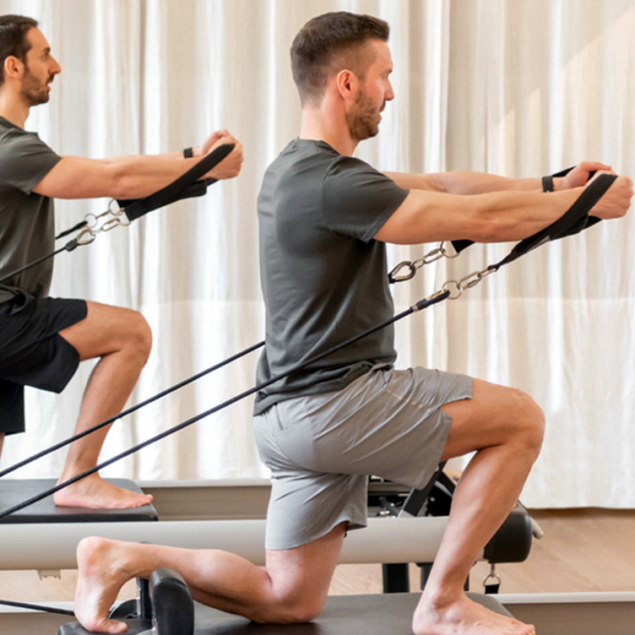
The pelvic floor is one of those things we don’t think about until it becomes a problem. Yet, a strong pelvic floor is vital for good overall health as it promotes core strength, stability and alignment as well as prevents pelvic disorders. Like any other muscle in your body, the pelvic floor can be strengthened by exercise. In KX Pilates, a stronger pelvic floor is both a direct result of our focus on core strength, and an indirect result from principles like mindful breathing and progressive resistance training. In this article, we help you understand why a strong pelvic floor matters and how to activate your pelvic floor correctly.
The pelvic floor is a set of muscles and ligaments that support a variety of crucial functions for both females and males. There are some differences due to the different reproductive systems. In both females and males, the pelvic floor supports the bladder and bowel, provides lumbar-pelvic stability and forms an essential part of the core. For females, the pelvic floor also supports the uterus.
The pelvic floor is crucial for stability and support. Because it is part of your core, activating your pelvic floor will enhance overall core strength and support, contributing to overall functional strength and reducing the risk of injury. The pelvic floor also supports your pelvis and spine which improves stability and balance, and helps maintain proper alignment during movement. Through this, a strong pelvic floor reduces the risk of poor posture-related issues, such as back pain.Additionally, when the pelvic floor is strong, it supports the pelvic organs and prevents pelvic floor disorders and problems like incontinence and prolapse of the bladder, bowel and uterus.
Obesity and simply getting older can affect the strength of the pelvic floor. Women are also more at risk of pelvic floor issues due to pregnancy, childbirth and menopause. Pregnancy and childbirth stretch and weaken the muscles, while the hormonal changes of menopause can contribute to a loss of muscle tone and elasticity. Circumstances that put repeated stress on the pelvic floor can also contribute to muscle fatigue and weakness, like repetitive high-impact activities and chronic health conditions like constipation and coughing.
While the pelvic floor muscles may have different anatomical structures and functions between genders, pelvic floor weakness is a common issue that can affect individuals of all genders. Therefore, pelvic floor strength is equally important for men as it is for women and both can benefit from having strong and well-functioning pelvic floor muscles.
The first step is to identify the correct muscles! Your pelvic floor muscles are the same muscles used to stop the flow of urine. To activate your pelvic floor, keep your thighs and buttocks relaxed and focus on drawing the pelvic muscles upward and inward, as if you’re lifting them towards your belly button. Take your time and remember to keep breathing. Pelvic floor exercises can be effective for both men and women in maintaining pelvic health. However, it can take time to experience improvements. To further focus on your pelvic health, try reformer Pilates like KX workouts where many exercises performed engage and strengthen the pelvic floor muscles.
KX workouts encourage activation of the pelvic floor through: